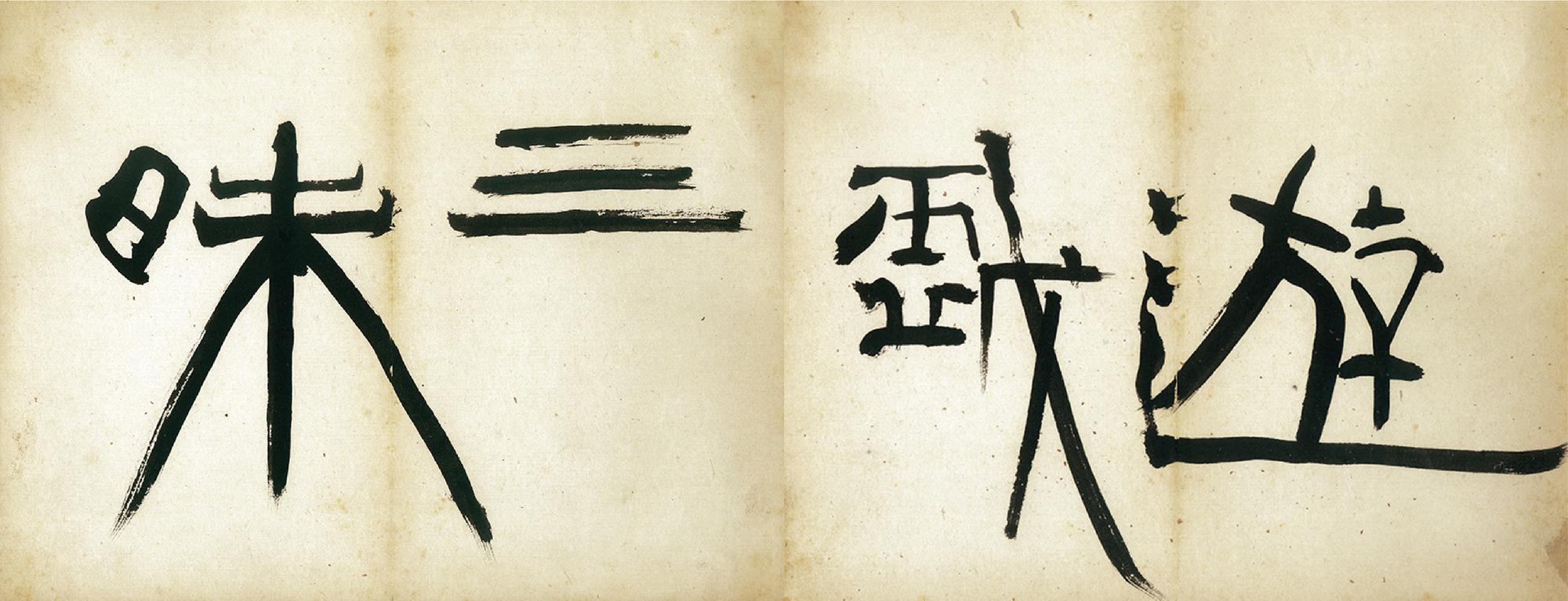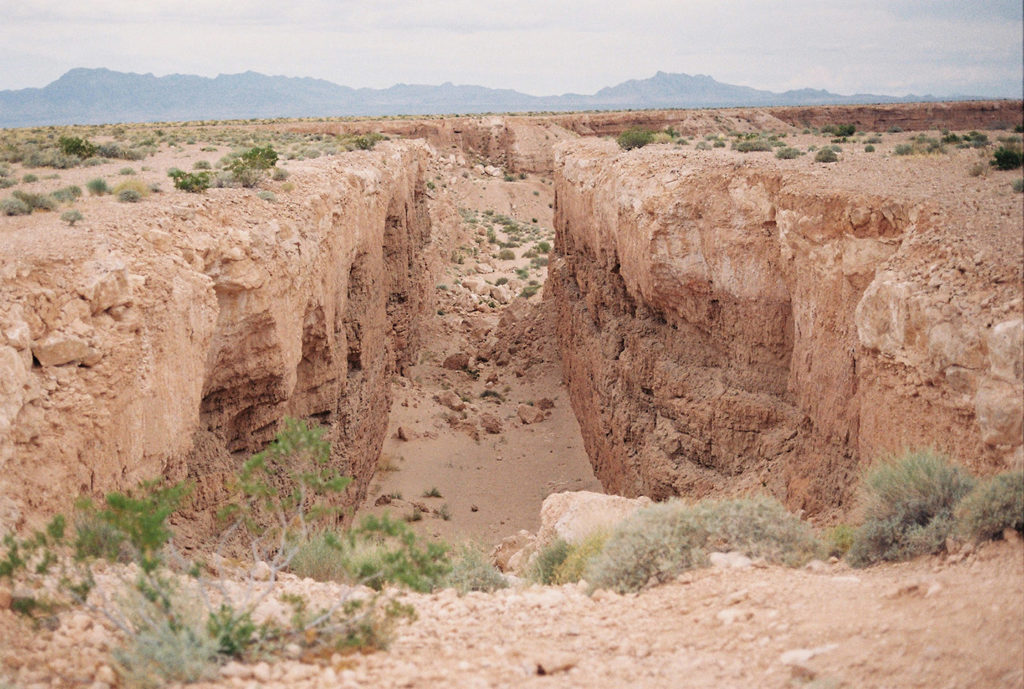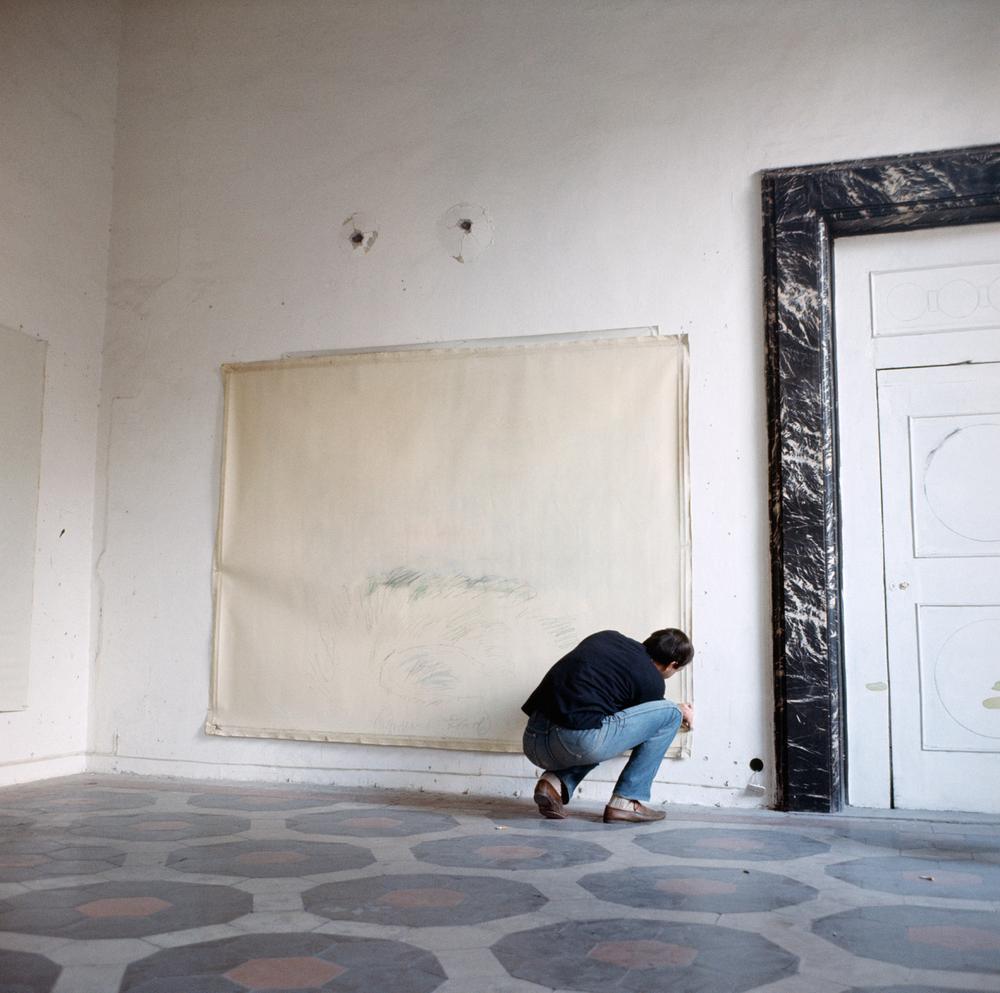Preface
서문
:Very Old Wisdom, Radically New Life
아주 오래된 지혜, 완전히 새로운 삶
01
Text and translation by 박상미 Mimi Park


Another moment came when I was in Seoul, Korea, years later. I was kind of stuck there. I was based in Seoul, when I got involved in a car accident in London during a work trip. There were many surgeries, and long recoveries. In and out of the hospital, I was living in Seoul for the first time in my adult life. Though I was experiencing culture shock as well as the physical and mental stress that ensued from surgery, I enjoyed the beauty of Korean nature, its craft and calligraphy. I had never really appreciated traditional Korean culture when I was growing up. I was mostly into Western art and literature. Now that I was all grown up, and had lived in New York for many years, things looked much different. I even moved to an old neighborhood with traditional Korean houses. And I traveled to places in Korea. Even when I was still on crutches, I made myself travel to the southern part of Korea, where beautiful mountains and rivers are. The landscape is generous and sensuous. One day, I was invited to a Chinese classics reading club. We mostly read poetry and prose by renowned writers. After the class, with classmates who were connoisseurs and writers of Korean culture, architects and artists, I had the chance to talk about the beauty of Korean ceramics, furniture and architecture. I was simultaneously excited and frustrated; Excited by the beauty of Korean craft, and frustrated by the lack of the discussion around it. I had this vague feeling that I should do something with this discovery.
The title “CLUMSY” is a quote from Tao Te Ching 45. It says that as the highest state of accomplishment appears imperfect, and the greatest eloquence appears hesitant (or lethargic), the greatest skill appears clumsy. When I shared my idea of the title with a friend who is knowledgeable about art, he didn’t think it was a good idea to use the word. He thought the words negative tone wouldn’t be suitable to convey the esthetic I care about. Given that it is difficult to understand all the paradoxes embedded in Eastern culture, most notably the ideas within Tao Te Ching, the concept of Clumsy is not easily deciphered.

Clumsy does not mean it is constructed by an untrained hand or without care. It means when a highly trained person lets go of their mind, the intention to excel, even the self, and is present in the process of making, it could allow a certain form to enter (or exit) the work. This mature, “fermented” state of form resembles the force of nature with its generosity, irregularity and emptiness. This form can be found in, notably, Moon Jars, the Korean white porcelain. This form of maturity allows one to enter and be a part of its experience, its beauty.
Even though it was not until later in my life when I began to read Tao Te Ching, my love for “clumsy” began early. Undoubtedly with Cy Twombly, for one, as I was amazed by his ability to let go of his trained hand as an artist. Even for people with no training, it is very difficult to “scribble” without a preconception of scribbling. Try it, and see how yours resemble others’ conventional doodles. (A friend of mine actually did this challenge, and proved himself wrong upon saying that he could draw like that) You must be completely “absent-minded” to “lose” your hand, to forget what you have seen before. I knew that in one aspect, it was hard, but also that it was important. In a way, Modern art began with the methodical losing of the “hand.” Consider Cezanne, and his Bathers. Look at Monet. Look at Picasso. Modernism was all about “unlearning” classical technique, the Renaissance stuff. Challenging prior beliefs that human beings held. After learning all the things you can studiously, “unlearn” to invent something new, even to rebirth. In order to do that you need to let go. It is, in fact, that art is an art of letting go.

As the world has been changing its form to an unrecognizable degree, I often had the urge to think of something old– radically old. Also I wanted to talk about esthetics that have grown old within me. Since I started writing about it, I once again realized that my taste and esthetics are not just limited to something visual. As Ralph Waldo Emerson said that all the things are related and connected infinitely, the esthetics of an individual is an attitude, and can also be ethics when it is extended to life. The characteristics of Korean artifacts are simple, humble, and natural; Modern art began with losing the skill of the Academy. The shared methodology of these two different cultural heritages is to let go of what is already known. This led to the phrase I learned from Tao Te Ching, “the greatest skill appears clumsy.” Whatever you do, whether it is playing golf or writing an essay, the key is to let go of your thoughts and be present in the making. When we let go of intention to do better, and free our minds, generous form will enter our lives. Forming an entirely new life with the ancient wisdom of letting go; it is both Zen and modern.
돌이켜보면 ‘클럼지CLUMSY’의 시발점이 된 내 삶 속 오래된 두 개의 순간들이 있다.

그중 하나는 오래전 내가 이탈리아를 여행하고 있을 때였다. 움브리아에서 했던 여름 프로그램을 마친 후 이탈리아를 여행할 수 있는 일주일의 시간이 있었다. 사람들은 베니스에 가야 한다고 했지만 나는 나폴리만에 있는 섬 중의 하나인 이스키아Ischia에 가기로 했다. 그때 나는 롤랑 바르트의 책을 읽고 있었고, 책에 실린 에세이 중 하나가 사이 톰블리의 작품 세계에 관한 것이었다. 바르트는 그 글에서 지중해의 바다와 하늘을 이야기했고, ‘희박the Rare’과 같은 단어를 사용했다. (그때 바르트는 톰블리가 프로치다Procida에 살았다고 했는데, 내가 왜 그 옆에 있는 섬인 이스키아에 가기로 했는지 기억이 나지 않는다.) 바르트의 말들은 당시 나의 어딘가를 건드렸고, 나는 그곳이 어떤 곳인지 가서 보고 직접 느껴야 한다고, 그의 말이 무슨 말인지 이해해야 한다고 생각했다. 당시 톰블리의 작업에 대해서는 이미 알고, 좋아하고 있었지만 그가 그런 곳에서 살았다는 사실은 알지 못했었다. 내가 톰블리의 작업을 처음 보았을 때 충격을 느꼈지만, 그와 동시에 그가 뭘 하고 있는지 바로 이해할 수 있다는 느낌을 받았었다. 문자와 소묘, 소묘와 회화, 오래된 것과 새로운 것 사이에서 아름답게 ‘갈 길을 잃은’ 선들은 시와 신화에 대한 사랑, 그 모든 것의 에로스를 보여주고 있었다. 나는 그렇게 지중해의 하늘과 바다를 보러 갔고, 톰블리의 경험을 상상하며 그곳에 머물렀다. 일주일이 지났을 즈음엔 혼자 여행하는 두려움은 사라지고 없었고, 나는 집에 돌아가고 싶지 않았다. 집에 가지 않고, 혼자 다시 떠나는 상상을 했을 때 내가 맞닥뜨린 허공이 지중해의 공간이었나 싶은 생각도 든다.
다른 한순간은 그로부터 수십 년 후, 한국 서울에서 경험했다.
나는 말하자면 서울에 발이 묶여 있었다. 뉴욕에서 서울로, 일 때문에 들어와 있을 때 런던에 출장을 갔는데 그때 교통사고를 당했다. 여러 번 수술을 했고, 회복은 길었다. 병원을 들락날락하면서 성인이 된 후 처음으로 한국에서 살게 된 것이다. 수술로 인한 물리적·정신적 스트레스 이외에도 문화적 충격을 겪어야 했지만, 나는 한국 자연과 공예, 그리고 서예의 아름다움에 푹 빠지게 되었다. 내가 어릴 때는 서양의 미술과 문학을 좋아했지, 한국의 전통문화에는 별로 관심이 없었다. 하지만 오랜만에 한국에 살게 된 나는 이미 외국 생활을 겪은 성인이 되어 있었고 많은 것이 달라 보였다. 나는 한국의 전통 가옥이 많은, 오래된 동네로 이사를 했고 한국의 여러 곳을 여행했다. 목발을 짚고 다닐 때도 아름다운 산과 강이 있는 한국의 남도를 여행했다. 풍경은 너그럽고 관능적이었다. 어느 날 나는 한문 고전을 공부하는 클럽에 들어가게 되었다. 유명작가의 시와 산문을 읽고 배우는 시간이었는데, 공부가 끝나고 나면 함께 한문을 공부하던 한국 문화의 권위자인 작가와 건축가, 미술가들과 한국 도자기, 가구, 건축의 미에 대한 이야기를 나눌 수 있었다. 이런 대화는 나에게 무척 신나는 일이기도 했지만 한편으론 답답하기도 했다. 한국의 미학은 매우 뛰어났지만 그에 관한 논의 자체가 별로 없었기 때문이다. 그때 나는 막연하게나마 이 엄청난 발견에 관해서 뭔가 해야한다고 느꼈다.
‘클럼지’는 도덕경 45장에서 인용한 것이다. 45장에는 ‘가장 최고의 성취는 모자란 듯하고, 최고의 웅변은 어눌한 것 같고, 최고의 기교는 서툴러 보인다’라는 내용이 담겨있다. 앞으로 쓰고 싶은 책의 제목과 주제를 ‘클럼지’로 하겠다고 뉴욕의 친구에게 말했더니 그는 좋은 생각이 아니라고 했다. 그 단어는 부정적인 뉘앙스를 갖고 있기 때문에 내가 좋아하는 미학을 전달하기엔 적절치 않다고 했다. 동양 문화 속에 존재하는 여러 역설적인 표현들, 특히 도덕경의 내용은 이해하기 어렵다는 걸 생각하면 여기서 ‘클럼지’의 의미를 이해하기 바란다는 것은 무리일지 모른다. 여기서 ‘클럼지’ 즉 ‘졸拙하다’는 말은 훈련받지 않은 자가 만들었다든가 아무렇게나 만들어서 서툴러 보인다는 말이 아니다. 높은 기교를 가진 사람이 잘하겠다는 의도를 내려놓을 때, 심지어 자아를 내려놓고 만드는 과정 속에 그저 존재할 때, 어떤 형태가 작업 속에 드러나게 된다. 이 완숙하게 ‘발효된’ 형태는 그 넉넉하고 불규칙하고 비어있는 어떤 자연의 상태를 닮게 되는데, 이 형태는 소박하고 서툴러 보이기까지 한다. 이는 대표적으로 한국의 백자, 달항아리에서 찾아볼 수 있다. 이렇게 너그러운 형태는 관람자를 그 안으로 끌어들여 그 미적 경험의 일부가 되도록 허락한다.
내가 도덕경을 접하게 된 것은 나중의 일이고, ‘클럼지’ ‘졸拙’에 대한 나의 취향은 실제로 서양미술과 함께 일찍 시작되었다. 그 좋은 예가, 앞서도 언급한 사이 톰블리다. 그가 숙련된 기교를 내려놓는 기술에 반한 것이다. 전혀 훈련을 받지 않은 사람들도 ‘낙서’라는 선입견 없이 ‘낙서’를 하기란 쉽지 않다. 한번 시도해보면 우리의 낙서가, 막 휘갈겨 그리는 그림이 얼마나 다른 사람들의 낙서와 닮아있는지 알 수 있다. 손에 익은 어떤 습관이나 기교를 버리려면 우리는 이를 잊는 훈련이 필요하다. 이건 어렵지만 중요한 일이다. 현대 미술은 어떤 면에서 그러한 숙련된 기술과 기교를 내려놓는 체계적인 전개 과정이라 할 수 있다. 세잔을 보고 모네를 보라. 이들이 원근법을 해체했고 석조건물을 케이크처럼 부서지듯 그렸다. 그리고 피카소를 보라. 당신 아버지는 피카소의 그림을 보며 “네 살짜리도 그리겠다.”라고 말할 것이다. 모더니즘은 고전적인 기술, 르네상스의 전통을 버리는, ‘역학습unlearn’ 작업이었다고 할 수 있는 것이다. 인류가 갖고 있던 믿음에 도전하고 새로운 것의 창조를 위해, 우리는 배운 것을 버리는 것이다. 이를 위해서 우리는 내려놓아야 한다. 실제로 예술은 내려놓음의 기술이다.

‘클럼지’의 시작은 책이었다. 정신없이 변화하는 세상 속에서 현기증을 느끼지 않기 위해서였을까. 내 안에서 오래 익어온 미학에 관한 이야기를 쓰고 싶었다. 글을 쓰며 새삼스레 느끼게 되었지만, 내 안에서 자라난 미학은 반드시 시각 예술에 그치는 것이 아니었다. 랄프 왈도 에머슨이 모든 것은 서로 무한히 연결되어 있다고 했듯이 어떤 미학은 하나의 태도이고, 이것은 삶으로 확대되어 한 사람의 윤리가 되기도 한다. 한국의 미는 소박하고 자연스러운 특징을 지니고, 모던 아트는 아카데미적 기교를 부수는 방법론으로 시작했다. 이 둘 간의 공통점이 내려놓음의 미학, 태도라는 것이 보였고, 이는 도덕경 속에서 내가 좋아하는 문구 ‘대교약졸’과 바로 연결된다는 점도 알게 되었다. 어떤 분야이든, 그것이 스포츠가 되었던 소설 쓰기가 되었든, 과정에 앞서가는 욕심과 생각을 내려놓지 않으면 좋은 성과가 나오지 않는다. 한편, 우리는 그동안 성과주의, 능력주의에 알게 모르게 희생되어 왔다. 성과를 위한 삶이란 앞뒤가 바뀐 사고방식이다. 우리가 의도와 욕심을 내려놓고 행복해질 때 얻을 수 있는 것 중 하나가 성과이지, 그 반대는 아닌 것이다. 앞서고자 달려가려는 바쁜 마음을 내려놓을 때, 너그러운 형태와 고통 없는 상태가 자연스레 따라오게 된다. 인류의 오래된 지혜, 비움을 통해 새로운 삶의 스타일을 꾸려나갈 때, 이것이 결국 선禪이고, 또 가장 현대적인 것이 아닐까.

RELATED POSTS




